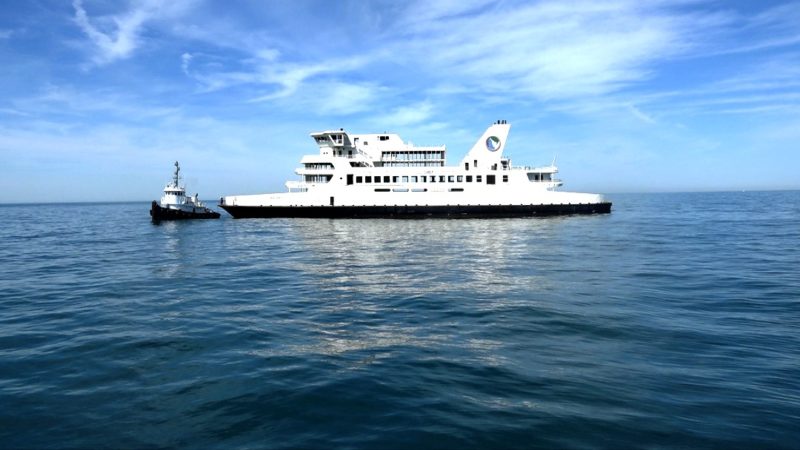The 320’x68’ ferry Twin Capes, former flagship of the Delaware River and Bay Authority’s fleet linking New Jersey and Delaware, is now a destination for fishermen and divers after it went to the bottom of the ocean Friday.
The double-ender vehicle and passenger ferry was emplaced on the Del-Jersey-Land Inshore Reef site, in 120 feet of water 26 miles southeast of Cape May, N.J., where the former Coast Guard cutter Tamaroa was likewise put to rest in May 2017. Contractor Colleen Marine, Norfolk, Va., handled the Tamaroa project and did a repeat performance with the Twin Capes, towing the old ferry away in August 2017 to clean and prepare it for the reef deployment.
Built in 1974 at Todd Shipyards, Houston, the Twin Capes was the biggest vessel on the 17-mile run between Cape May, N.J., and Cape Henlopen, Del., with capacity for 895 passengers. But over the years its higher operational costs compared to the authority’s three other vessels became a handicap.
The authority invested in a $27 million refit and upgrades in 1996, but by 2010 the Twin Capes was used only during the peak weeks of summer. In 2013 the authority tried to sell the ferry – even cutting the asking price from $5.5 million to $3.3 million – but found no buyers amid a market of lighter and more efficient newbuild vessels. In the end, the reef builders paid $200,000.
But that rebuild made the Twin Capes attractive for Delaware’s artificial reef program. The addition of four new decks, a higher pilothouse and tall stacks in the 1990s gave the vessel a 70’ tall profile that should make it a very successful fish habitat, even attracting big pelagic species like tunas and sharks, according to the Delaware Department of Natural Resources and Environmental Control.




